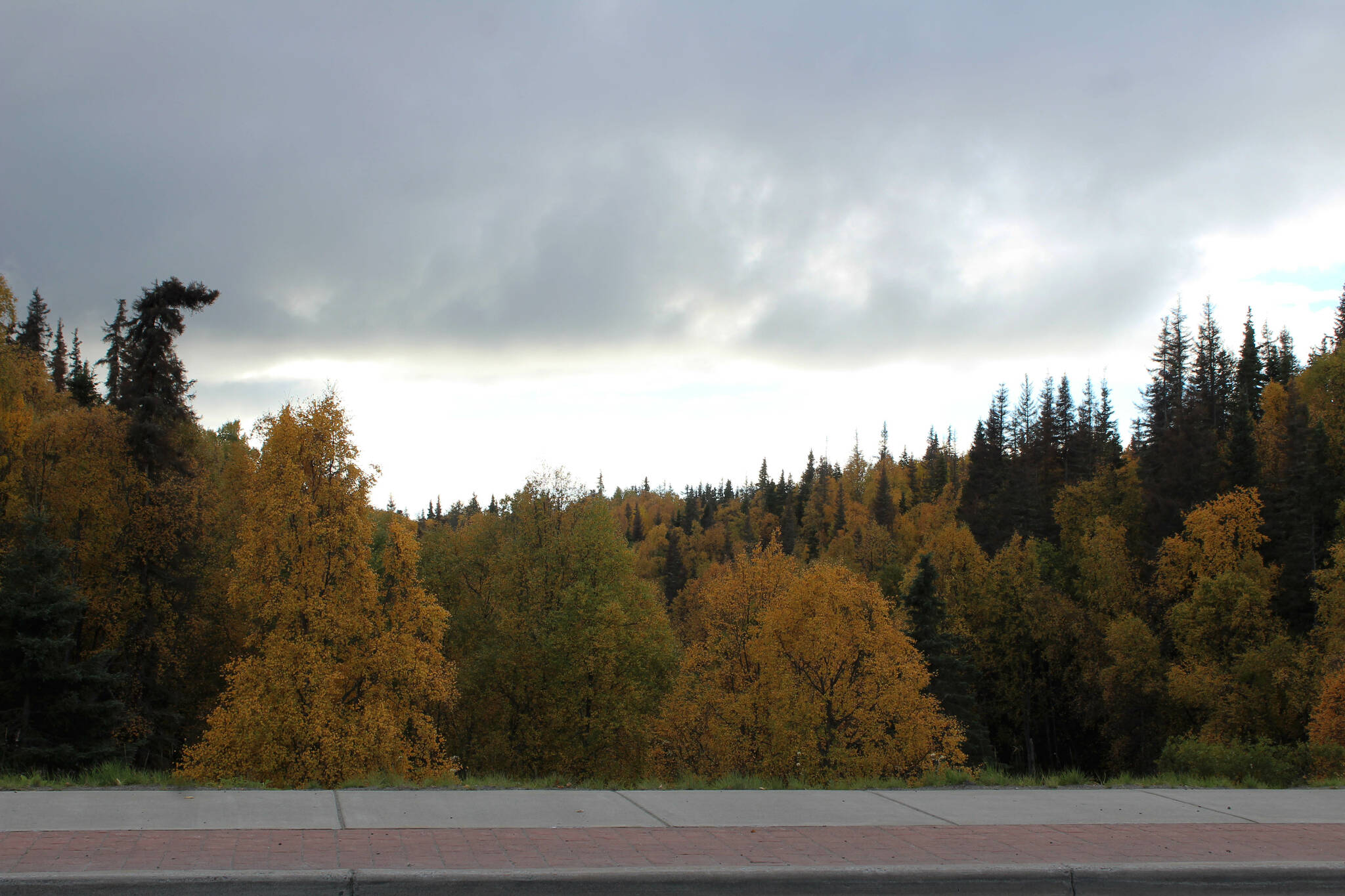The City of Kenai will use $770,000 in grant money to address hazardous spruce trees along Shqui Tsatnu Creek following a vote to accept the funds by Kenai City Council members during their Wednesday night meeting.
The total dollar amount comes from two separate grants. The city received a $385,000 grant from U.S. Department of Agriculture and a $385,000 grant from the State of Alaska Division of Forestry. The state money can be used as the city’s local match for the federal grant, giving Kenai a total of $770,000 to work with.
City officials told council members Wednesday that the money will be used to mitigate hazards caused by dead and dying spruce trees over more than 100 acres of city land.
“This is a significant project that has one of the highest urban interfaces within the City,” Kenai Fire Chief Tony Prior wrote in an Aug. 29 memo to council members.
In all, the project area covers 105 acres around Shqui Tsatnu Creek from the beach to about the Kenai Municipal Airport. Treatment of dead and dying spruce trees in the gully is described in Kenai’s Community Wildfire Protection Plan, Prior wrote, and will build on the work already being done to combat the spruce bark beetle outbreak. Tree treatment, he wrote, will vary depending on terrain.
“Some areas will be accessible with mechanical equipment and some areas will need hand falling of trees,” Prior wrote.
The Kenai City Council voted in May to adopt the Kenai Peninsula Borough’s updated Community Wildfire Protection Plan, which is meant to help protect life and reduce property loss due to the wildfire throughout the borough. The plan is the first to be boroughwide and was compiled from various documentation, including 17 community-level protection plans produced between 2006 and 2009.
In describing the benefits of the Shqui Tsatnu Creek project, Prior emphasized safety for homeowners, businesses and recreationists, as well as city aesthetics.
“This is an amazing opportunity to begin our efforts of actually removing beetle kill trees from areas of high risk and to start improving the safety of homeowners and businesses from wildfire,” Prior wrote. “This is a project that has taken 2 years to make happen and I urge you to pass this Ordinance as it is in the best interest of the City.”
The grant awards accepted by the Kenai City Council on Wednesday came about 10 days after the city’s slash disposal site closed for the season. That site, located off of the Kenai Spur Highway near the soccer fields, was established by the city earlier this year using separate grant funds awarded by the State of Alaska Division of Forestry.
In all, Kenai was awarded $50,000 per year for three years to offset costs related to the slash disposal site. The site, which did not accept commercial slash, opened June 2 and closed Sept. 11. Kenai Parks and Recreation Director Brad Walker said last week that the site saw more than 800 visits, representing about 75 acres treated.
“The plan for the slash that has been collected is to burn it before we open again next year,” Walker said via email. “The slash site is grant funded for the next three years and will operate under the similar structure as it did this year.”
As of 2020, more than 150,000 acres of forest had been impacted by spruce bark beetle infection on the Kenai Peninsula, including about 21,000 acres of forested land between Cooper Landing, Kenai and Soldotna. The dead and dying white and Lutz spruce trees affected by the beetles are hazardous; they’re prone to falling over and are especially susceptible to fires.
Residents can take an active role in reducing spruce bark beetle populations by knowing how to treat and store their spruce firewood. The Alaska Division of Forestry offers guidance on their website about the best conditions for wood at each stage of infection.
The Kenai Peninsula Borough Community Wildfire Protection Plan can be found on the borough’s website at kpb.us/emergency-mgmt/plans/cwpp.
Reach reporter Ashlyn O’Hara at ashlyn.ohara@peninsulaclarion.com.

